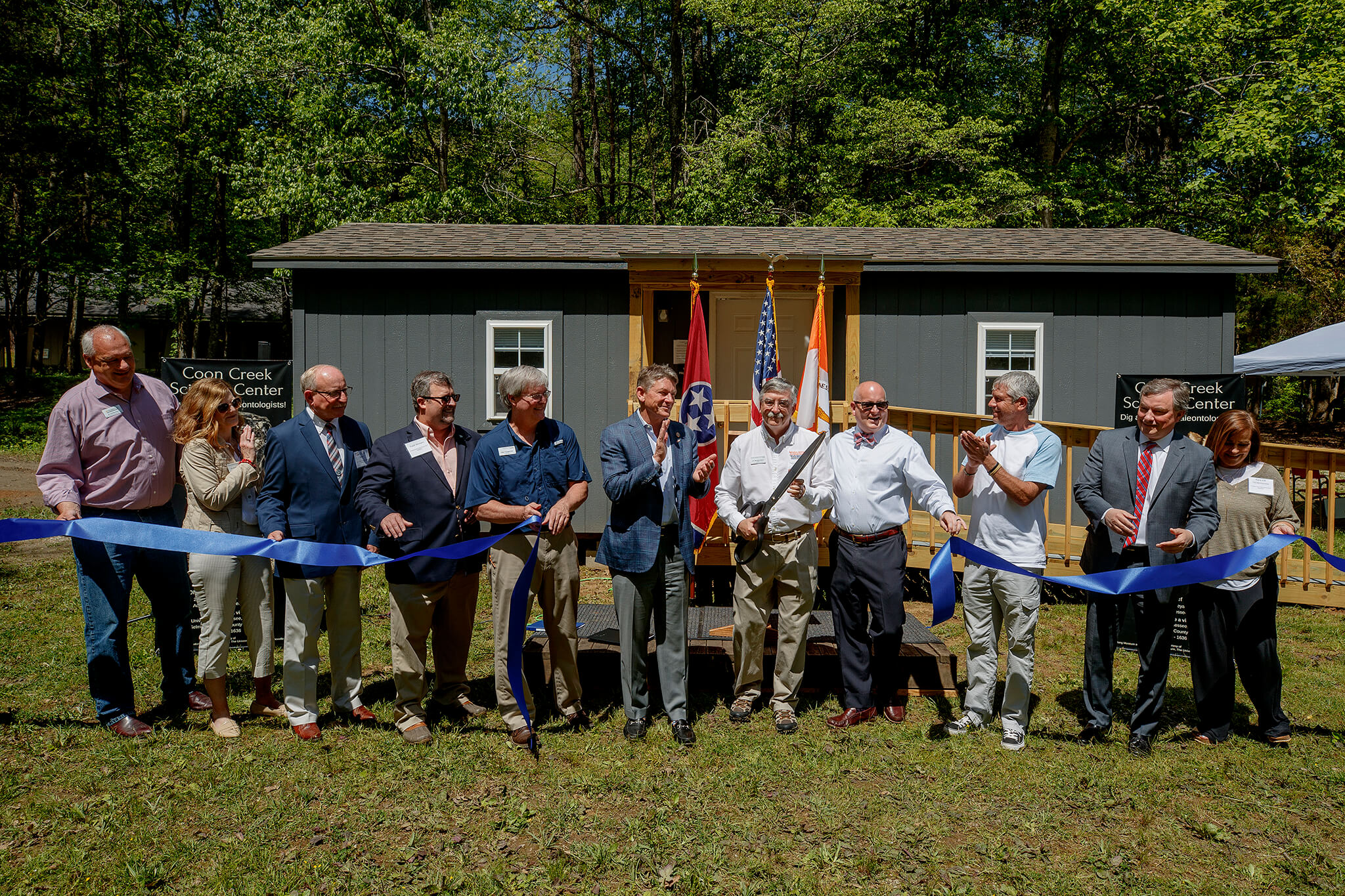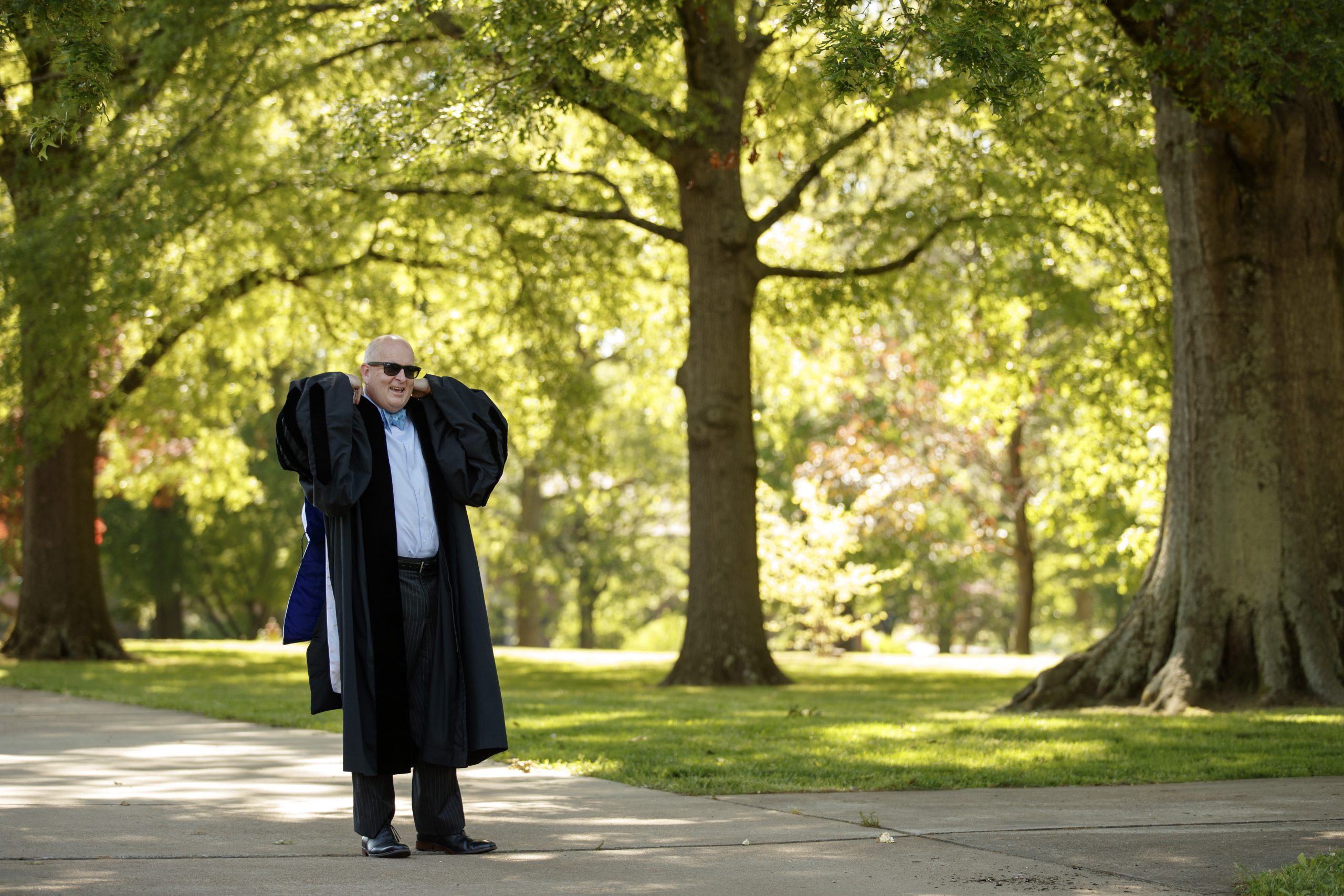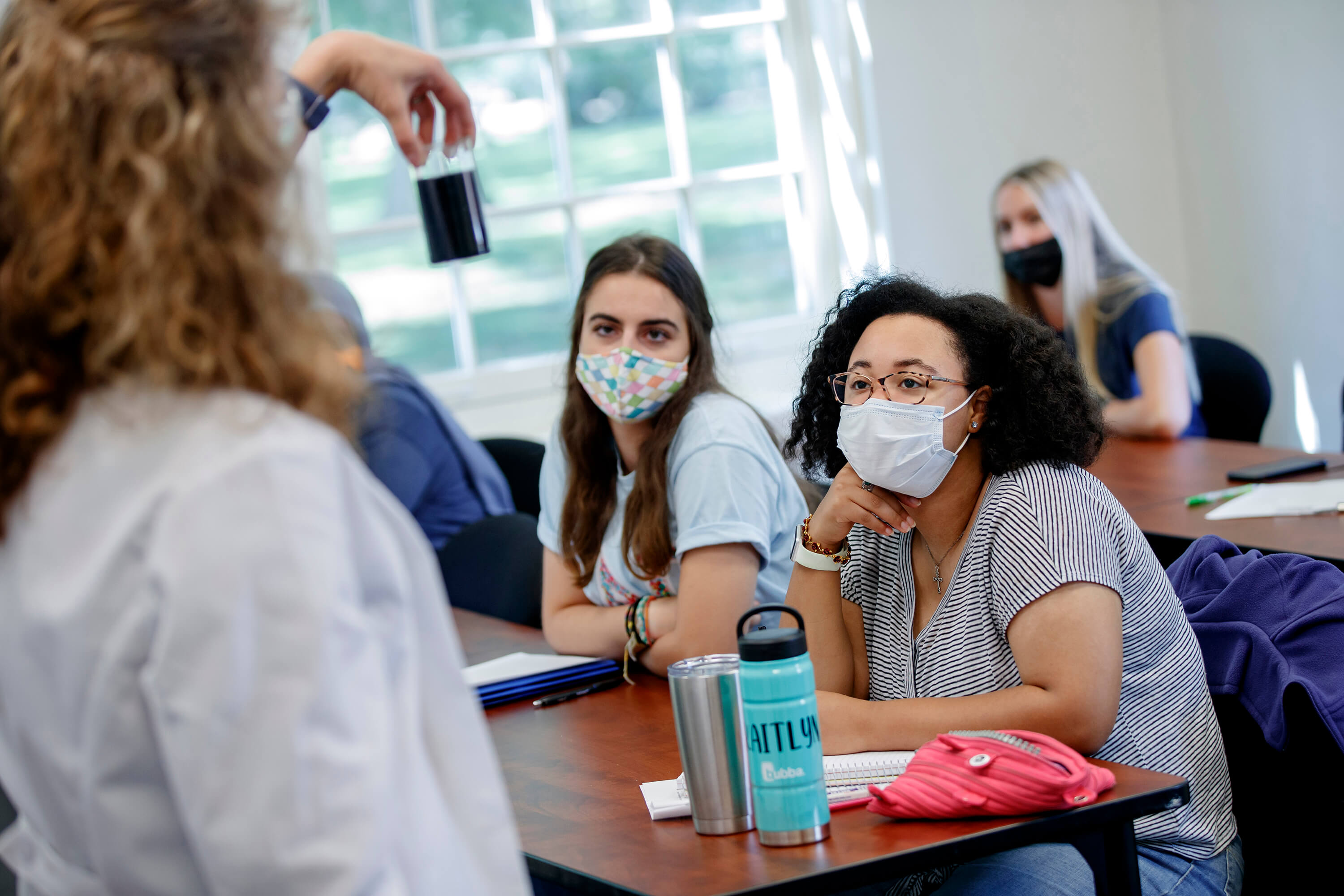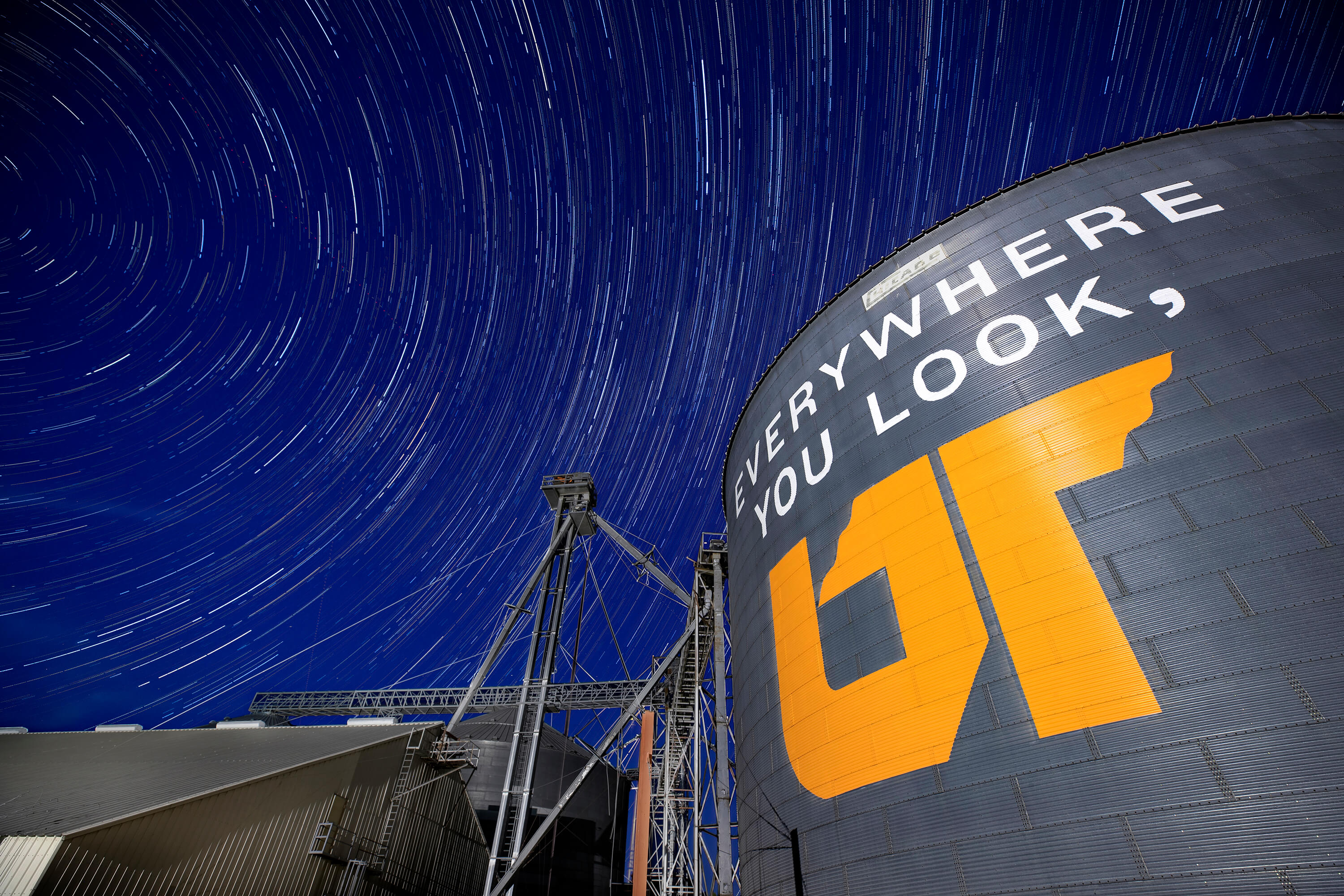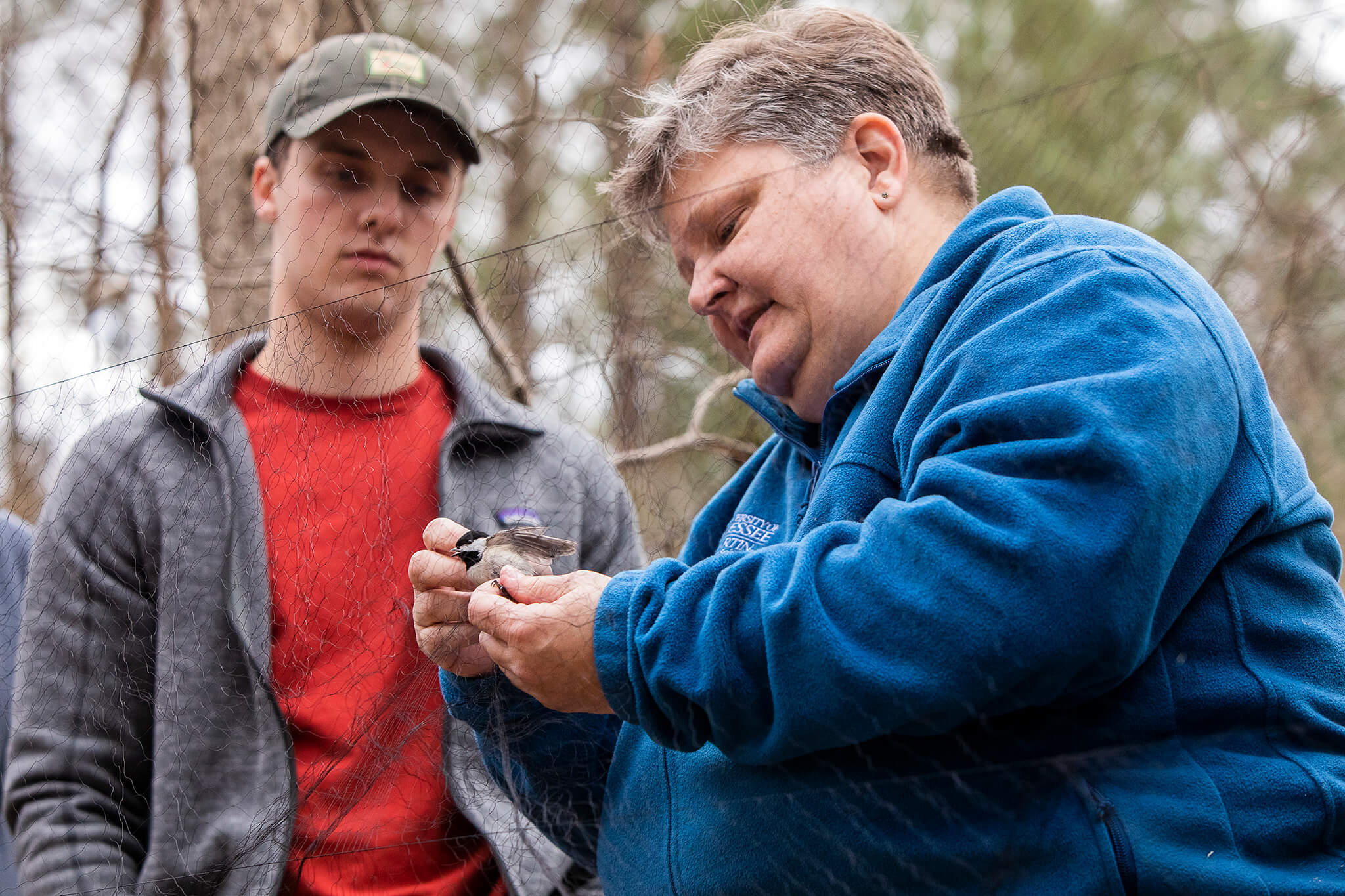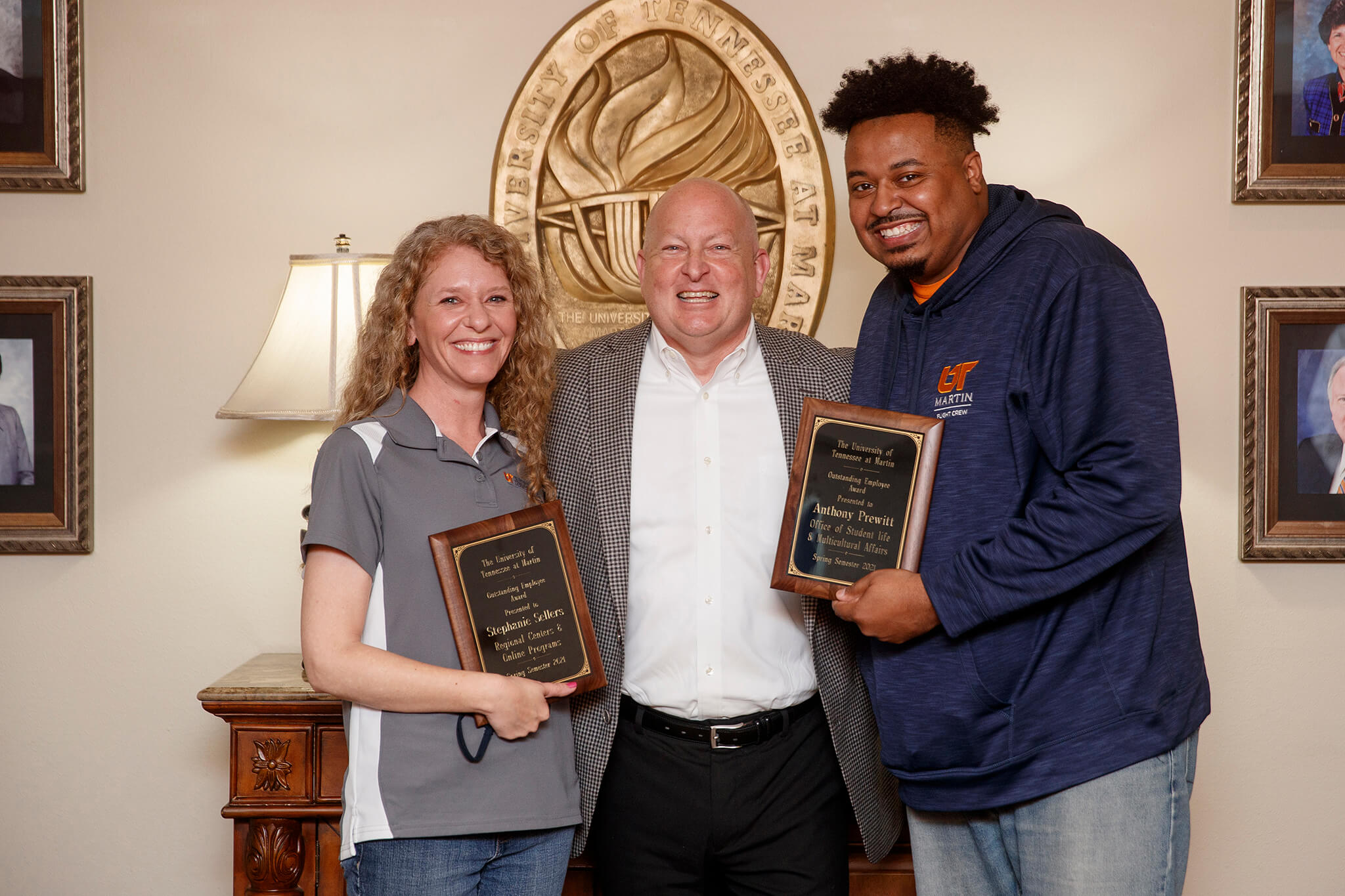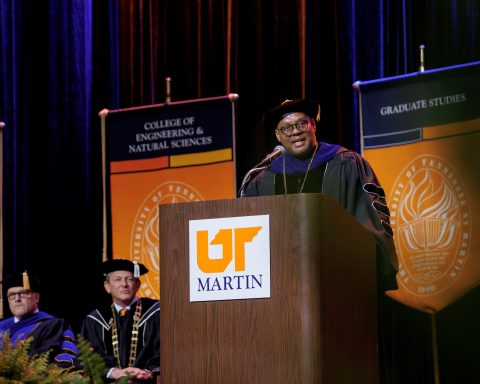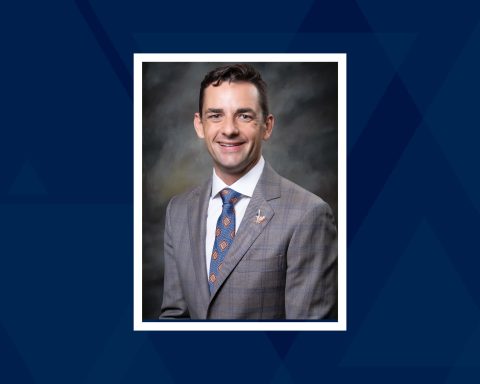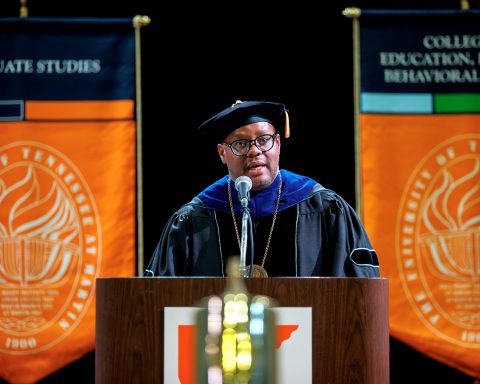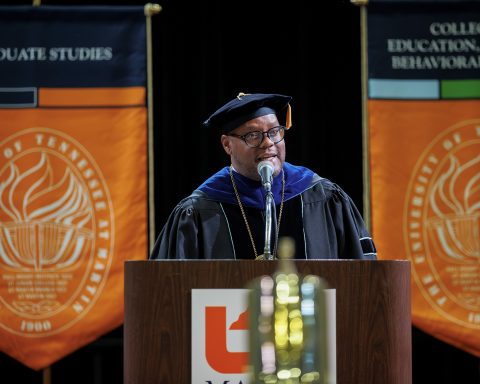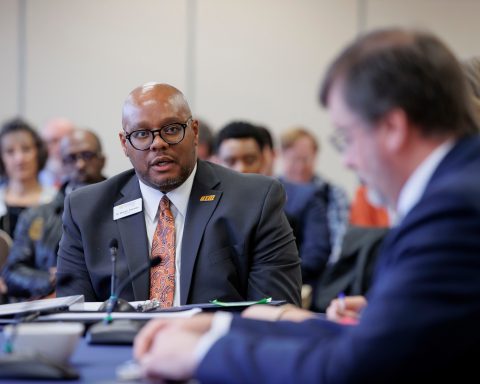UT President Randy Boyd called the Coon Creek Science Center arguably the largest classroom now in the University of Tennessee System. UT Martin Chancellor Keith Carver noted that the center property has been around millions of years longer than UT Knoxville predecessor Blount College, which was founded in 1794. Both shared their excitement about the center with elected and university officials, center volunteers and students during an 11 a.m. invitation-only ribbon-cutting ceremony April 30 for the newly acquired UT Martin Coon Creek Science Center. The center is located off Hardin Graveyard Road in rural McNairy County.
As one of the most important fossil sites in the U.S., the UT Martin Coon Creek Science Center is a 70-plus million-year-old exposed seafloor deposit that’s home to almost 700 preserved marine species. The 240-acre property was acquired by lease in April 2020 by the university from the Pink Palace Family of Museums in Memphis after years of partnership for institutional field research, community outreach and instruction.
“The ribbon-cutting ceremony is the first official step to opening a new phase in the history of science at the site,” said Dr. Michael Gibson before the event. Gibson is science center director and UT Martin professor of geology. “From this point forward, UT Martin will oversee the application of newer methods of conservation and study, along with expanded education.”

The science center will host various educational programs year-round, including UT Martin faculty and student research opportunities, classes and internships, external geoscience professional and field training, educator training, summer camps and more. Visitors of all ages and professions can receive hands-on experience learning how to carefully find and extract fossils.
Boyd referenced UT’s new Be One UT values as he described the center’s potential impact. “The ‘B’ in the values stands for being ‘bold and impactful,’ and I think this (the center) is definitely bold and impactful,” Boyd said. “The ‘N’ stands for being ‘nimble and innovative,’ and this is incredibly nimble, it’s incredibly innovative – something that we don’t have anywhere else in the UT System, an incredible opportunity.
“The ‘U’ stands for ‘united and connected,’ and this project is something that we’re doing with K-12 schools,” he continued. “We’re doing it with 4-H and through all the different community partners. It’s one of the things that the University of Tennessee strives to do is to work with our connections, not just within the campuses but also with all the communities across the state.”
“UT Martin’s commitment to the Coon Creek Science Center will provide high-impact educational experiences in and out of the classroom and, additionally, will educate responsible citizens for careers, professions and service, while conserving this site for future generations.”
Carver followed Boyd on the program, reviewed the site’s history and told how the Pink Palace Museum and the city of Memphis guaranteed the fossil site’s preservation and conservation in 1988 when the museum acquired the site and built the Coon Creek Science Center. “But beginning in the early 1990s and continuing through today, UT Martin geosciences have partnered with the Pink Palace in a unique and successful partnership/collaboration that’s established this site as one of the premier fossil sites for research and field-based STEM education in the region,” said Carver. He thanked museum officials for their work leading to the long-term lease agreement.
“UT Martin’s commitment to the Coon Creek Science Center will provide high-impact educational experiences in and out of the classroom and, additionally, will educate responsible citizens for careers, professions and service, while conserving this site for future generations,” he said, adding, “We could not be more excited about this partnership.”
A lunch and program for attendees at the UT Martin McNairy County Center/Selmer followed the ribbon-cutting event. Alan Youngerman, center director, and Gibson led the program, which included a more detailed overview from Gibson about Coon Creek’s significance in the paleontology world.
Gibson noted that Stephen J. Gould, a well-known Harvard University paleobiologist, once described Coon Creek as a top-10 fossil site in all of North America. Gibson shared examples of Coon Creek’s well-preserved fossils and invited those attending to return sometime for a fossil dig. His only advice: Dress for the occasion.

“If you’re going to come out there, you’re going to get dirty, so you need to dress accordingly,” said Gibson. “Because I’ll take you to the dirtiest spot.”
The property is managed by UT Martin McNairy County Center/Selmer, and more information is available by calling the center at 731-646-1636.

